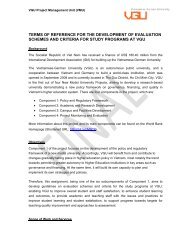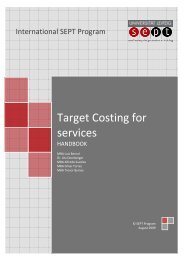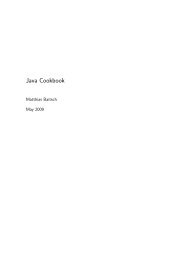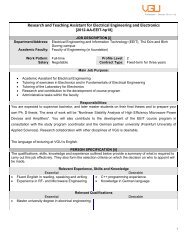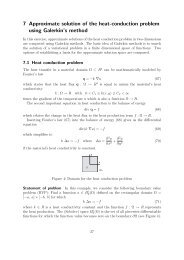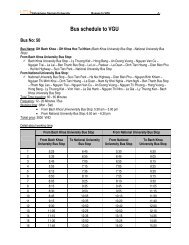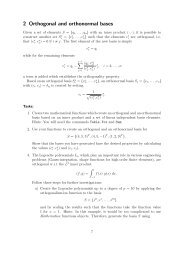VGU Urban Development Planning Overview over Modules and ...
VGU Urban Development Planning Overview over Modules and ...
VGU Urban Development Planning Overview over Modules and ...
Create successful ePaper yourself
Turn your PDF publications into a flip-book with our unique Google optimized e-Paper software.
Technical University Darmstadt www.urban-studies.de<br />
International<br />
Co-operation<br />
<strong>and</strong> <strong>Urban</strong><br />
<strong>Development</strong><br />
Course description<br />
1 Course identification<br />
2.4.4<br />
2 Module 2.4.<br />
Sustainable urban<br />
infrastructure &<br />
technology<br />
3 Name of course Disaster mitigation in human settlements<br />
4 Course instructor Prof. Dr. Detlev Kammeier, AIT Bangkok, BTU<br />
5 Contents /syllabus The preventive action against hazard threats is the<br />
prime instrument to reduce impacts. Knowledge of the<br />
nature of those threats – caused by conflicts, natural<br />
hazards or technological risks - forms the basis for<br />
response action. Adequate response capacities <strong>and</strong><br />
the availability of logistic <strong>and</strong> supply resources are<br />
elementary. Coordination between security, rescue<br />
<strong>and</strong> logistic services, public initiatives<br />
<strong>and</strong> responses are to be placed in an agreed decision<br />
making process. Crisis management is therefore<br />
accepted as an important the technique to maximise<br />
the effect of the allocated resources <strong>and</strong> to bring order<br />
into potentially chaotic conditions after the outbreak of<br />
disaster. The role of relief is analysed, with particular<br />
attention to its disruptive effects on the regular<br />
development process. The differences between local<br />
<strong>and</strong> international relief are studied <strong>and</strong> mechanisms to<br />
reduce the negative effects are discussed.<br />
Topics to be c<strong>over</strong>ed include:<br />
• Disasters causes <strong>and</strong> effects: natural, technological<br />
hazards <strong>and</strong> displacement.<br />
• Vulnerabilities <strong>and</strong> mitigation options.<br />
• Simple mitigation rules for building construction<br />
• Emergencies: preparedness, warning <strong>and</strong><br />
response.<br />
• Preparedness,<br />
• Response planning: predictable tasks, victim<br />
prediction, resource planning.<br />
2.4.4 Page 1



